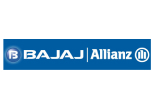Are There Tax Benefits in Buying Money Back Plans?
Table of Contents
As a component of the policy's survival benefit, a money back plan is a type of life insurance that gives payments on a routine basis for the duration of the policy's term. Insurance companies provide a survival benefit as an incentive for surviving, making it an effective investment strategy.
In opposition to certain other life insurance policies that reimburse the recipient at the conclusion of the policy period, the money back policy gives to the beneficiary continually during the policy term. Instead of a single lump sum payout at the end of the policy's term or at death, the insurer will get monthly payments for the rest of his or her life.

Tax Benefits Available With Money Back Plans
Below mentioned are the different tax benefits associated with investing in a money back plan.
1. Section 10 (10D)
According to Section 10(10D) of the Income Tax Act of 1961, with some exceptions, the beneficiary is totally exempt from paying taxes on the amount of the insured payout, including any incentives granted, the deposit of the insurance, or the death of the life assured.
Thus, only the occurrences listed below will cause the policy to be chargeable in the insured person's hands: If the payment due in any given year exceeded 20% of the actual value covered, the insurance earnings from a life policy acquired after 1.4.2003 but before 31.3.2012 would in fact be taxable to the owner of the insured under section 10(10D).
2. 80C of Income Tax Act
The advantages of these programmes are specified in Section 80C of the Income Tax Act of 1961. Additionally, periodic investment policy incentives, survivor advantage, and maturity benefit are also tax-free. One can claim a decrease of Rs.1,50,000 underneath the 80c tax reduction. Simply put the highest limit that may be subtracted from the tax that must be paid under Section 80C is Rs.1,50,000.
3. Section 80D
A deduction for paid medical insurance premiums is also included in this component. Under section 80D, either a person or an HFU may profit from this deduction. You can use the maximum deduction of Rs 25,000 to cover the cost of your own health insurance as well as the insurance of your significant other as well as any dependent children.
They are qualified for an extra Rs 25,000 reduction if they are younger than sixty. 50,000 rupees is deducted extra in case the parents are older than sixty. The maximum deduction is Rs 1,000,000 if the applicant and both parents are over sixty.
Conclusion
Three main elements of the Income Tax Act of 1961 offer tax advantages. The available portions are 10(10D), 80C, and 80D. Section 80C allows for a maximum deduction of Rs. 150,000. Section 80D allows for a maximum deduction of Rs 25,000. If they are younger than sixty, an extra deduction of Rs 25,000 is made.
If they are older than sixty, they are subject to a deduction of Rs. 50,000. If both the applicant and the parent are older than sixty, the reduction is Rs 1,000,000. TDS of 20 percent can be applied in 10 days if the life insured does not show a PAN card (10D). If a PAN card is presented, TDS can be imposed in the amount of 2%.
Also Read:
Learn About the Maturity Benefits Of Money Back Policy
Who Should Invest in Money Back Plans?



























































